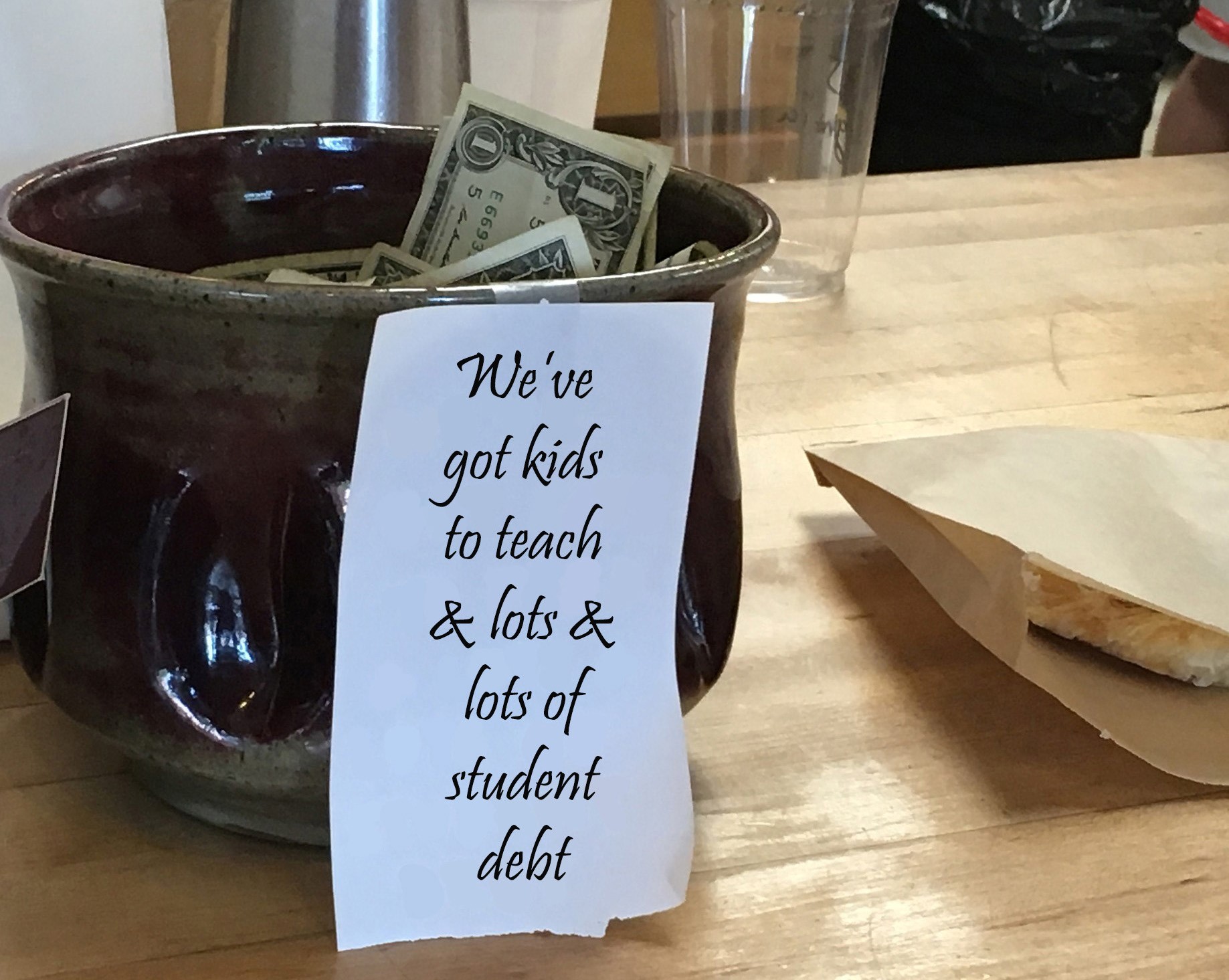


For many, student loans represent a significant investment in an individual’s future. Borrowing to complete an undergraduate, graduate, or professional degree program is often the only means to pay for the cost of higher education, as the price tag continues to increase at public and private institutions alike.
Currently, more than 44 million Americans have outstanding student loan debt, totaling over $1.4 trillion among them, and these figures make it hard to fathom how student loan balances will ever be paid off.
Fortunately, some student loan borrowers have access to valuable forgiveness programs that offset the burden of paying for student debt over the course of several years. In this guide, borrowers can learn about what student loan forgiveness is, the available student loan forgiveness programs, caveats to forgiveness, and how private student loans are impacted.
What Is Student Loan Forgiveness?
Student loan forgiveness is the process of having outstanding loan balances canceled after a period of on-time, consistent monthly payments. Whether in full or in part, student loan forgiveness means that a borrower has the slate wiped clean and there is no longer an obligation to repay a remaining balance.
The cancellation of student loan debts takes place through the borrower’s student loan servicer, but the federal government via the Department of Education takes on the financial responsibility of student loan forgiveness. Students may be eligible for loan forgiveness based on their employment, their career field, or their selected repayment program.
Student Loan Forgiveness Programs
There are several student loan forgiveness programs available to qualified borrowers through the Department of Education, including Public Service Loan Forgiveness, Teacher Loan Forgiveness, Income-Driven Repayment Forgiveness, and Perkins Loan Cancellation.
Public Service Loan Forgiveness
Under the Public Service Loan Forgiveness program, also referred to as PSLF, individuals who borrowed federal student loans to help pay for their education who work in a public service position may have outstanding balances forgiven after a period of ten years of repayment. The program started in 2007 and is made available to qualifying workers, like teachers, military personnel, nurses, and firefighters, who hold a job in a non-profit organization or the government.
To qualify, borrowers must have worked in a qualifying field for at least ten years and made payments on their federal student loans for at least the same amount of time. Employment with a qualified organization must be full-time, which means at least 30 hours per week. At this time, only federal direct loans are eligible for PSLF, but a consolidation of other types of loans may indirectly provide loan forgiveness to some qualified borrowers. After the 120th payment is made, borrowers may submit an application to their federal student loan servicer.
Teacher Loan Forgiveness
Individuals who borrowed to help pay for their college degree may qualify for teacher loan forgiveness through the Department of Education. Through the teacher loan forgiveness program, borrowers who work as teachers on a full-time basis may qualify to have up to $17,500 in direct or Stafford student loans forgiven. Eligible teachers must work in a low-income public elementary or secondary school, and they must have worked in that environment consecutively for the last five years.
While direct and Stafford loans are eligible for the teacher loan forgiveness program, borrowers must have taken out their first loans on or after October 1, 1998. Borrowers who believe they are eligible for teacher loan forgiveness may submit an application directly to their student loan servicer after the five years of consecutive, qualifying employment is complete.
Forgiveness Via Income-Drive Repayment
The federal government also offers student loan forgiveness to borrowers who elect to participate in an income-driven repayment program. Through these repayment options, which include income-based, income-contingent, Pay As You Earn and Revised Pay As You Earn, a borrower’s monthly student loan payment is capped as a percentage of monthly discretionary income, recalculated each year.
At the end of the repayment term, either 20 or 25 years, the remaining balance is automatically forgiven so long as borrowers have made consistent, on-time payments. To apply, borrowers must contact their federal student loan servicer directly to ensure they are on the most appropriate repayment program and are ultimately eligible for income-driven repayment forgiveness.
Perkins Loan Cancellation
Certain borrowers who show an exceptional financial need at the time of applying for federal financial aid may qualify for Federal Perkins Loans. These loans are low-interest federal student loans made available to both graduate and undergraduate students, up to certain limits. Perkins loans are only offered through participating schools, and the college or university offering the loan is the student’s lender, not the federal government.
Borrowers with Perkins Loans who work in certain types of public service or certain occupations may qualify to have a percentage of the loan canceled after each year of employment. Perkins Loan cancellation is currently offered to volunteers in the Peace Corps or ACTION program, teachers, members of the U.S. armed forces, nurses or medical technicians, law enforcement, Head Start workers, child or family services workers, and professional providers of early intervention services. To apply for Perkins Loan cancellation, borrowers must contact the school from which the original loan was acquired.
Special Considerations and Drawbacks
While student loan forgiveness can ease the burden of large student loan balances, there are caveats. First, student loan forgiveness tied to an income-driven repayment plan has certain tax implications for borrowers. At the time outstanding loan balances are forgiven, a borrower is taxed on that amount as income.
As an example, for an individual with a 25% income tax rate who has $30,000 in student loan debt forgiven may owe $7,500 in income tax the year the balance is canceled. Fortunately, borrowers who qualify for Public Service Loan Forgiveness, Teacher Loan forgiveness, or Perkins Loan cancellation are not taxed on any balance forgiven.
Additionally, borrowers who plan to utilize a federal student loan forgiveness program are susceptible to legislative changes that could severely impact their chances of being released from obligations. In recent months, student loan forgiveness for all current programs has been debated in Congress, leaving some borrowers weary of banking on forgiveness as part of their long-term financial plan.
There is no prediction that can be made as to what will take place with any of the student loan forgiveness programs, but borrowers should be aware that any or all of these benefits may disappear in the future, leaving the responsibility to repay student loans fully on their shoulders.
Finally, student loan borrowers who plan to use student loan forgiveness through PSLF or teacher loan forgiveness often work in career fields that offer lower earning potential over a lifetime. Taking a smaller annual income is beneficial in qualifying for loan forgiveness, but it may lead to challenges in setting aside savings for long-term financial goals.
Each loan forgiveness program requires years of on-time payments before loan balances are forgiven, so it is important for borrowers to weigh the pros and cons of career decisions in advance.
Forgiveness for Private Student Loans?
All student loan forgiveness programs mentioned in this guide are relevant for student loan borrowers who have federal student loans, or those originally provided through the Department of Education.
Private student loans offered by financial institutions not tied to the federal government do not currently qualify for student loan forgiveness under any federal program. There are, however, rare instances where student loans provided by private lenders may be canceled.
Borrowers may be able to have private student loans discharged through bankruptcy proceedings, but only when they are able to prove that the monthly payment will impose an undue hardship for an extended period of time. Each bankruptcy court varies by state, and this means that the tests used to evaluate undue hardship also varied greatly.
Generally speaking, if a borrower is unable to maintain a minimal standard of living for himself or his dependents based on income and expenses, including private student loan payments, a discharge through bankruptcy may be possible.
For student loan borrowers who currently have federal student loan debt, the idea to refinance into private student loans may be appealing. This is because most private student loan lenders offer extended repayment plans and variable interest rates that seem lower at the onset of a loan refinance, saving borrowers money on their monthly payment as well as on the total cost of borrowing over time.
However, because private student loan lenders do not offer any respite to borrowers by way of loan forgiveness over time, individuals should carefully consider their options with their federal student loans before opting to refinance with a private lender.
Overall, federal student loan forgiveness can be a smart strategy for borrowers who plan to work in a certain career field or select an income-driven repayment plan after graduation. When consecutive, on-time payments are made to eligible federal student loans, forgiveness can be a light at the end of a long tunnel.
However, borrowers need to be aware of the caveats of federal student loan forgiveness, including tax implications, uncertainty about the viability of forgiveness programs, and the need to take lower-income positions before relying heavily on a forgiveness program to repay student loan debt.

















